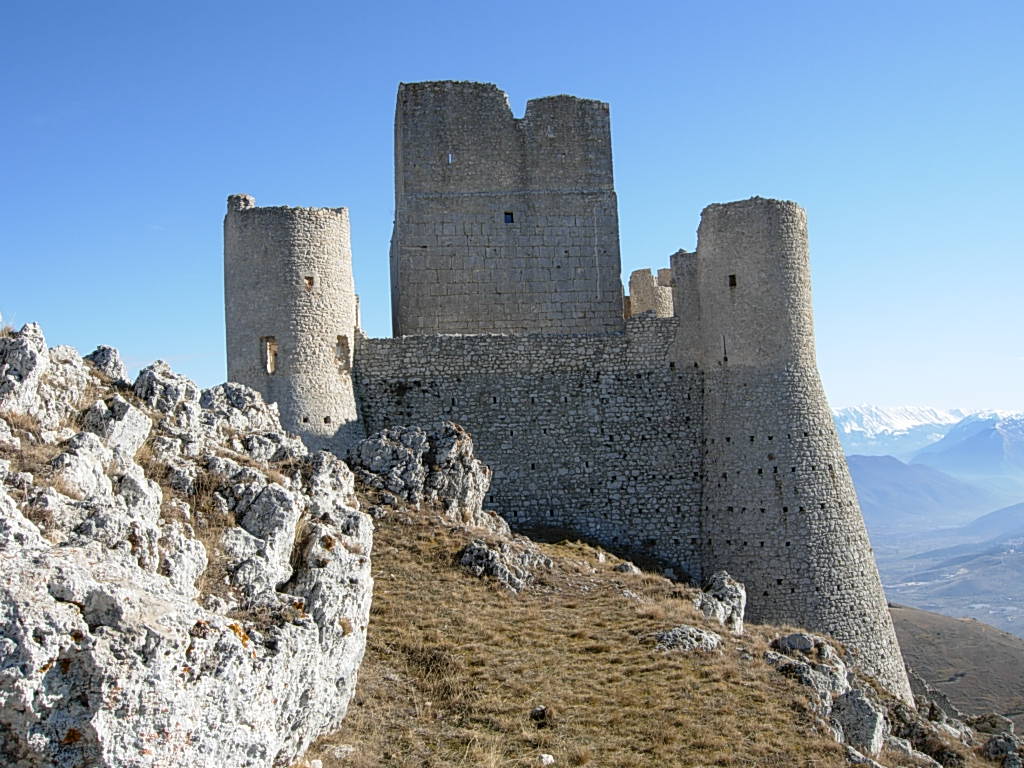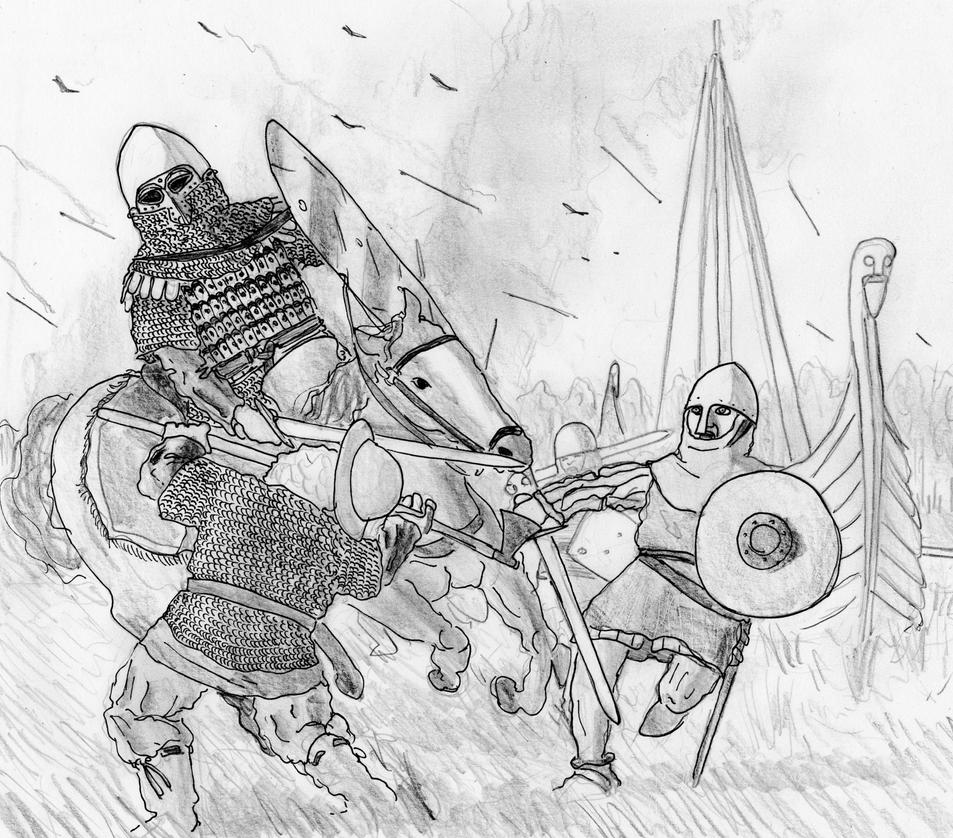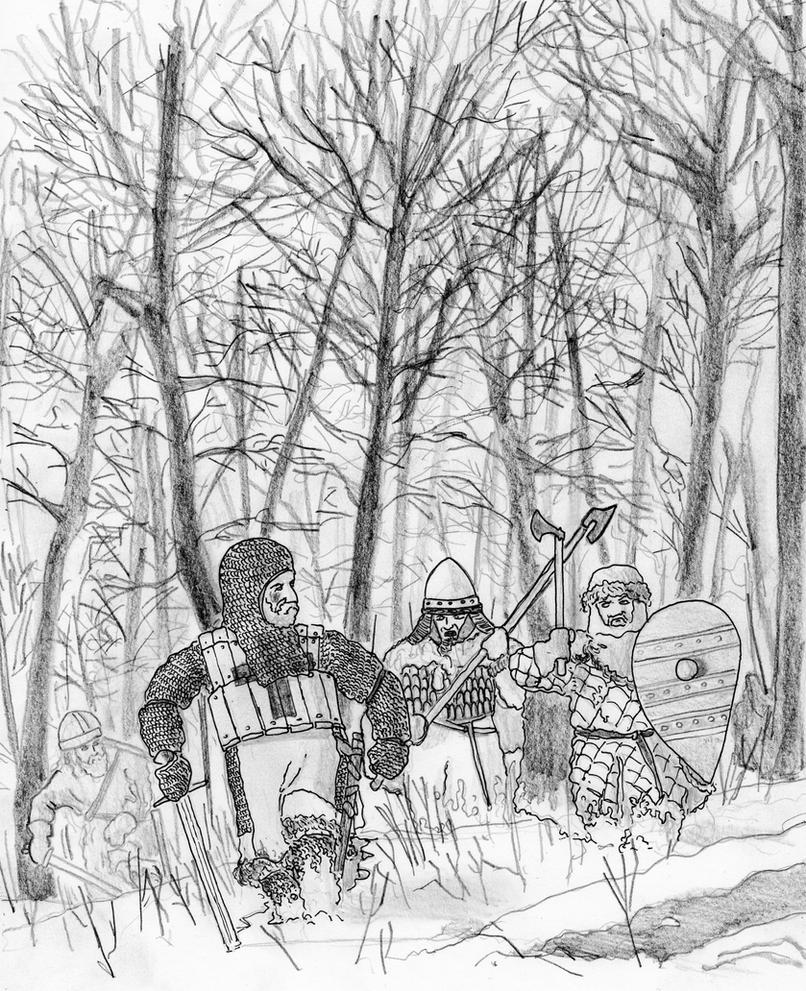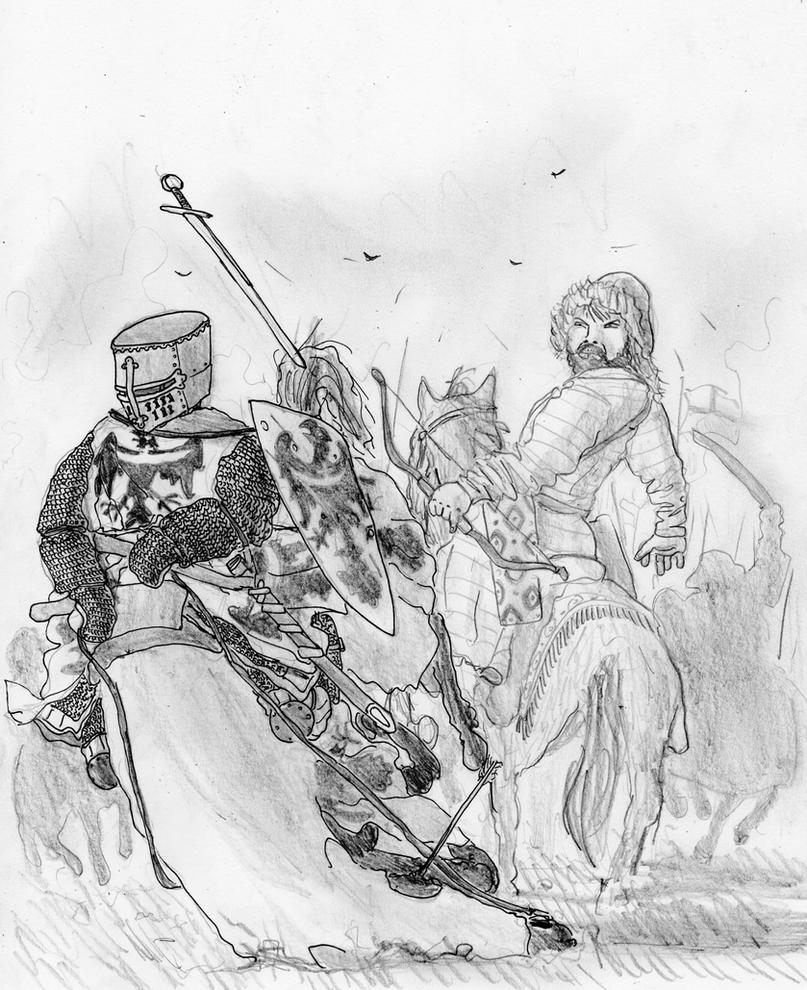Ivan the Awesome
Knight

Whatsup with the corpses on the siege tower?? Did they actually do that??


thick1988 said:I think you have pasted the wrong image code friend.
Al_Mansur said:@ F.F.C._fritz, could you tell me which is the Portuguese XIIIth century illustrated musical poem that you used for the soldier of the Moorish castle ?
Al_Mansur said:Actually, contemporary Muslim textual sources confirm that XIIIth century Andalusian warriors were heavily influenced, in terms of armours, by their Christian foes (although this latters might have been influenced by Muslims in first, during the X-XIIth centuries, therefore it is often hard to determinate the origin of certain features, such as helmets' decorative gilded crests/plaques or tasseled shields).
Al_Mansur said:Otherwise, I hope some drawings of French castles will come, as well as illustrations of Castillan, North African and Aragonese troops
Btw if you need informations about Castillan XIIIth century kings outfits, I can help you.
you opened the Pandor's boxBy the way, I know there are a lot of history buffs from the Balkans too playing this game, so I'd like to ask you if you could help me with information and, most wanted, archaeological and visual medieval sources for the Serbs' troop tree. If possible, name me an event (a battle, maybe) between 1230-65. The only sources I could find of medieval Serbs is a very generic Osprey book on Hungary and nearby regions. I know about an obvious strong byzantine influence, but if you know more, share!
I reckon that maybe I was wrong talking about a portoguese poem for the Cantigas, I must have been confused by the fact that Las Cantigas where written in Galician Portuguese (that's wikipedia, so I know it may be wrong).
I've read the same yet still I tend not to trust too much medieval sources. Las Cantigas are well detailed, but sometimes they gave me the impression of an artist drawing muslims just as he drew christians, adding the muslims side some turbans and light cavalry here and there and little else to give a little different feeling. I know it was not like total war with no influence and no communication between christians and muslims - in fact, quite the opposite - but still some doubts remains.
North African troops will come for sure, as the Almohads and the Hafsids have an own troop tree, even if I'm still trying to think in what they did differ from the Granadians, since - as far as I've understood it - the Kingdom of Granada came after the Almohadian breakdown in Iberia not much time before 1257 or could their peculiarity be. If you have suggestions about them - equipment, battles (1230-1265), events, medieval sources - they are welcome!
I don't know about French castles, since the catholic castle scene is done. At first I had thought to the mighty Angers castle - that must have been HUGE, but then I decided for a classic Norman castle, due to the fact that the Normans and their architecture were spread across a lot of Europe - English Isles, Northern France, Italy and maybe more - and the most classic (squared) and less modified I found (without knowing exactly where to search, I admit) was Dover, which was modified but not in a way it was too hard to recreate.

Last but not least, I'm quite sorry I still have no drawings with Castillans, as I know a lot of iberians follow the mod! At first, for the troop encounters, I wanted when possible to recreate various moments of battles and the Latin troops tree (both Iberian christians and Italians) were gone with Montaperti. So now I'm thinking to a "desert bandit encounter" including castillans or christian iberian against light muslim cavalry, I just have to think to a suitable event. I know Iberia is not a desert, but I guess Andalusia does have "desert like" regions or, at least, very dry areas - but maybe is just a wrong convinction based on Sergio Leone and his "spaghetti western". Of course any help with archaeology and primary sources are welcomed.





By the way, I know there are a lot of history buffs from the Balkans too playing this game, so I'd like to ask you if you could help me with information and, most wanted, archaeological and visual medieval sources for the Serbs' troop tree. If possible, name me an event (a battle, maybe) between 1230-65. The only sources I could find of medieval Serbs is a very generic Osprey book on Hungary and nearby regions. I know about an obvious strong byzantine influence, but if you know more, share!
Al_Mansur said:I haven't played to the mod for a long time, but weren't there Marinids instead of Almohads ?
Otherwise, North Africans differed a lot from Granadans, as show us the illuminations of Las Cantigas, one more time corroborated by textual sources, but also by ethnography. They were far lighter. Medieval texts quoted by Osprey tell us that by XIIIth century, only Marininid nobles wear mail armors. Therefore North African warriors probably looked like that:
http://warfare.totalh.net/Cantiga/Cantigas_de_Santa_Maria-181.htm (even the traditionnal Berber patterns are represented, on the horses' clothes).
However, a particularly heavy helmet - a conical helmet with a neck protection looking like sort of late medieval Turkish helmets - existed in XIIIth century Morocco. It is mentionned in late XIIIth century texts, and almost certainly depicted in this Moroccan manuscript of 1224:
http://warfare.uphero.com/alSufi/Vatican_Library-Ross.1033-Cepheus.htm
Concerning battles and events, I think that the size of Fez in 1248 and the one of Marrakech in 1269, both by the Marinids over the remaining Almohads, are interesting.
Al_Mansur said:Actually, this style of huge square keep protected by 4 towers is rather Anglo-norman than Norman, although a few like that exist in Northern France too (especially the one of Chambois, Normandy). Have you examples of keeps like that in Italy ? It interest me a lot. Otherwise, a revolution of military architecture took place in early XIIIth century France, under the reign of Philippe Auguste. As a result appeared the typical French castles, with their high rooded towers and keeps with hoardings, like that:
This architecture is emblematic, not only of medieval France, but of all medieval Europe, as it did spread all over the continent.

Al_Mansur said:The Andalusian deserts of Tabernas and Nijar-Cabo de Gata are the most known thanks to Sergio Leone, but actually deserts can be found in all Iberia. One of the two most impressive ones are in Aragon: the desert of Las Bardenas:
and the desert of Los Monegros:


And very dry places are as frequent as verdant places in Netherlands

. So I think it's ok

So, according to Las Cantigas, tunic and robes for north africans, with turbans, of course, and some armor for the lords with the pointy helmet you posted instead of the typical castillan/andalusian shown in Las Cantigas.
Could you suggest me a link about the size of Fez? I can't find the 1248 size in english.
I'll be honest with you, I did heard about innovations by Phillip August but really didn't know much about them - I'm not that much into architecture.
I was afraid to draw something possibly anachronistic (too much modern for the XIII c.), so I took Dover as a simple choice - famous castle built in a famous style SURELY before the mod timeframe. You're right about squared castles with 4 towers being an Anglo-Norman characteristic. I'm not sure about 4 towers in Italy, but sure there are a lot of squared keeps. Here's an interesting index if you'd like to see Norman castles in the south. You'll surely see how many of them must have been modified as the time passed by, but still it may be of some interest.
http://commons.wikimedia.org/wiki/Category:Norman_castles_in_Italy
Since you wanted it for towered and squared, even if I don't think is Norman, here for you this central Italy badassary Rocca Calascio, apparently built from the XI century onwards - it must be said it was never tested in battle. You may have seen it in movies such as "The Name of Rose" and "Ladyhawke" or, at least, so they say.
(click to show/hide)




Nice scenery, but it always hurts when I see swords thrust into the earth or snow. No sane soldier would damage his weapons like that. If I could raise a tax for every image with knights praying with their swords stuck into the earth, I'd be a rich man now.F.F.C._fritz said:






